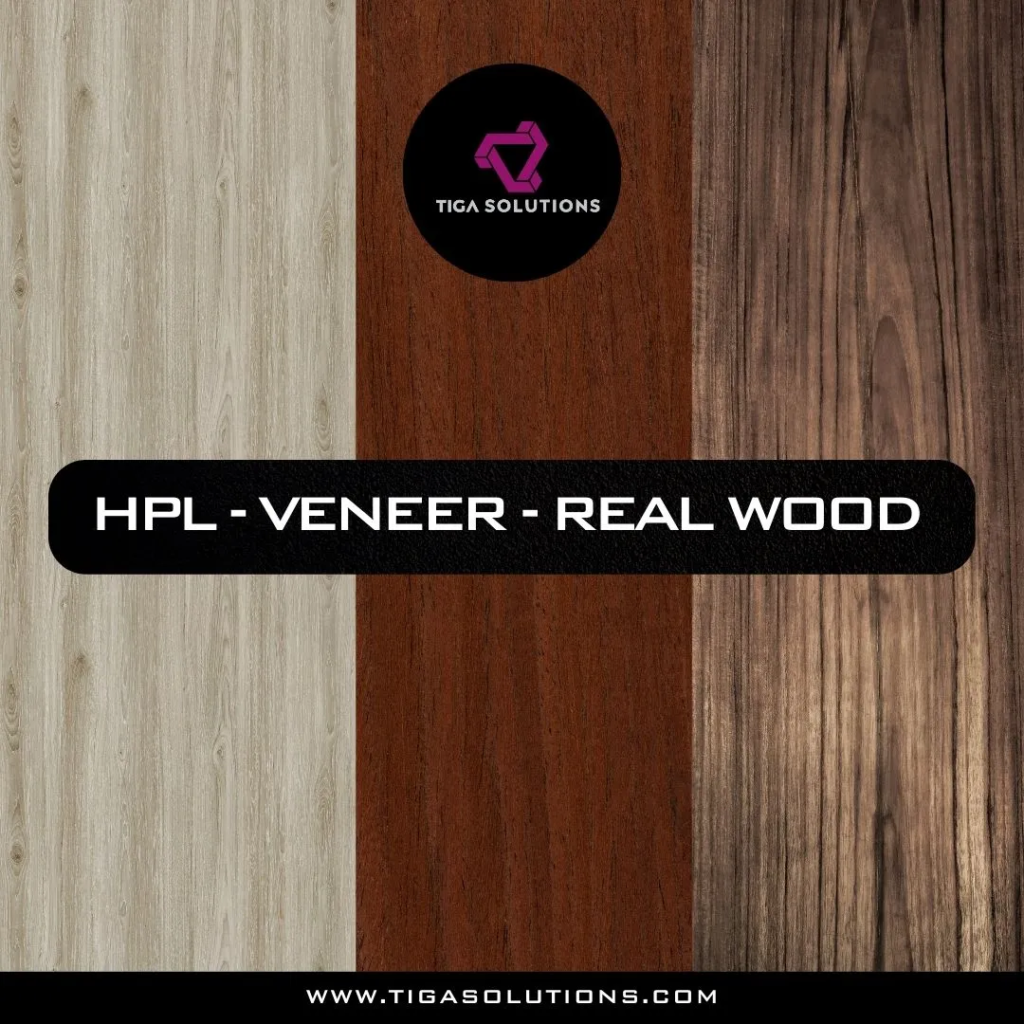
When selecting materials for your interior the choice often comes down to High-Pressure Laminate (HPL), veneer, or real wood. Each of these materials has distinct characteristics, advantages, and disadvantages. Understanding these can help you make the best decision for your space, style, and budget.
High-Pressure Laminate (HPL)
What is HPL? HPL is an engineered material made of plastic, bonded to a composite base, and constructed with multiple layers fused together under high pressure and heat.
Pros:
- Durable HPL is known for its durability, making it a great choice for high-traffic areas.
- Scratch, Stain, and Heat Resistant It can withstand scratches, stains, and heat, which makes it ideal for kitchens and other demanding environments.
- Easy to Clean and Maintain HPL surfaces are easy to clean and require minimal maintenance, saving time and effort.
- Multiple Style and Finish Options With a wide range of styles and finishes, HPL can mimic the look of various materials, including wood and stone.
Cons:
- No Natural Grain HPL lacks the authentic variations and natural grain of real wood, which may be a drawback for those seeking a natural look.
- Quality Varies It’s important to differentiate HPL from the less durable Low-Pressure Laminate (LPL). Quality can vary, so choosing a reputable brand is essential.
Veneer
What is Veneer? Veneer consists of a thin layer of real hardwood applied to plywood or medium-density fiberboard (MDF).
Pros:
- Solid Wood Look Without the Price Point Veneer provides the appearance of solid wood but at a lower cost.
- Richer Stain Options Thanks to the natural wood layer, veneer offers richer stain options and a more authentic wood finish.
- Less Expensive Than Solid Wood Veneer is more affordable than solid wood while still offering a high-end look.
Cons:
- Susceptible to Scratches and Dents The thin layer of wood is prone to scratches and dents, requiring careful handling.
- Chipping Since it is just a thin layer of wood, veneer can chip more easily than solid wood.
- Water Damage Veneer can be damaged by water, necessitating the use of padding and coasters to protect the surface.
Real Wood
What is Real Wood? Real wood is solid, natural wood cut from trees, showcasing the full grain and unique characteristics of the tree.
Pros:
- Beautiful Natural Grain The natural grain and unique patterns of real wood add a touch of elegance and warmth to any space.
- Luxurious Real wood is often associated with luxury and quality, making it a desirable choice for premium furniture.
- Sustainable As a natural and renewable resource, real wood is a sustainable option for environmentally conscious buyers.
Cons:
- High Cost Real wood comes with a premium price tag, reflecting its quality and natural beauty.
- Easily Damaged It is susceptible to chipping, stains, and water rings, requiring careful maintenance and protection.
- Protection Required Often, real wood furniture needs additional protection, such as glass tops, to keep it looking pristine over time.
Choosing between HPL, veneer, and real wood depends on your priorities, budget, and desired aesthetic. HPL offers durability and low maintenance, veneer provides a solid wood look at a lower cost, and real wood delivers unmatched natural beauty and luxury. Consider the pros and cons of each material to find the perfect fit for your interior needs.
Ready to transform your space with the perfect material? Contact Tiga Solutions today and let our experts guide you in selecting the ideal option for your interior project. Whether you prefer the durability of HPL, the elegance of veneer, or the luxury of real wood, we’re here to help you bring your vision to life.

